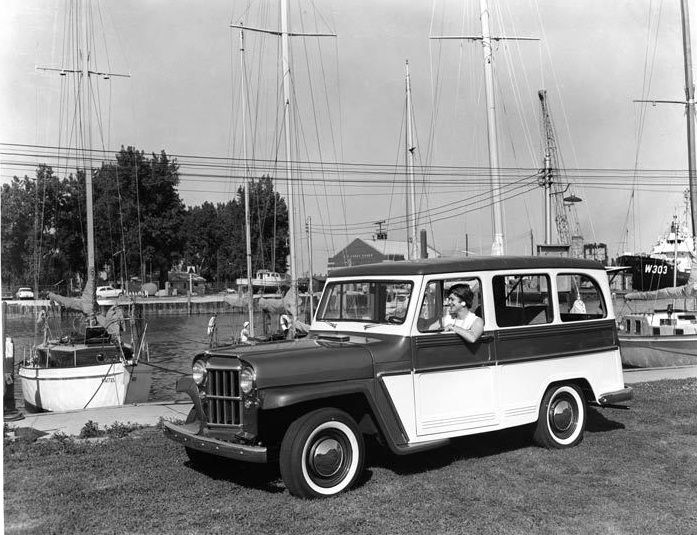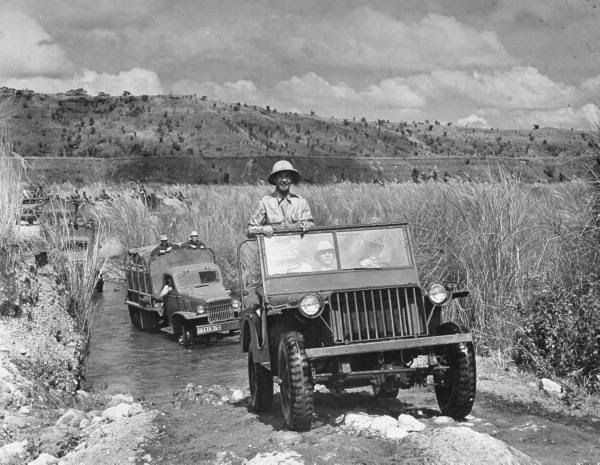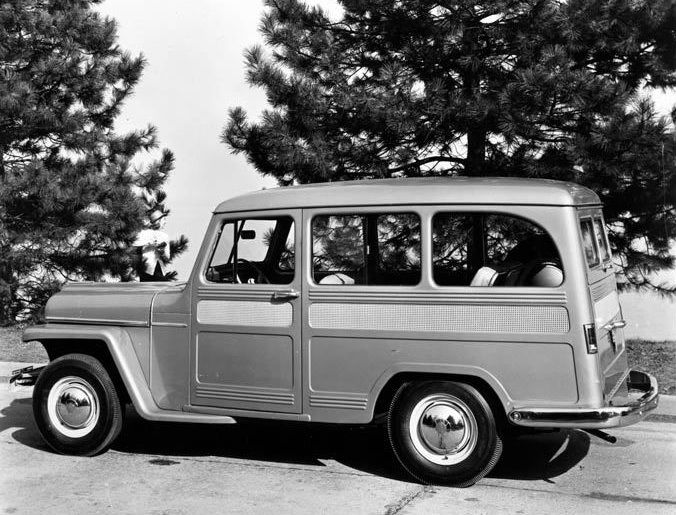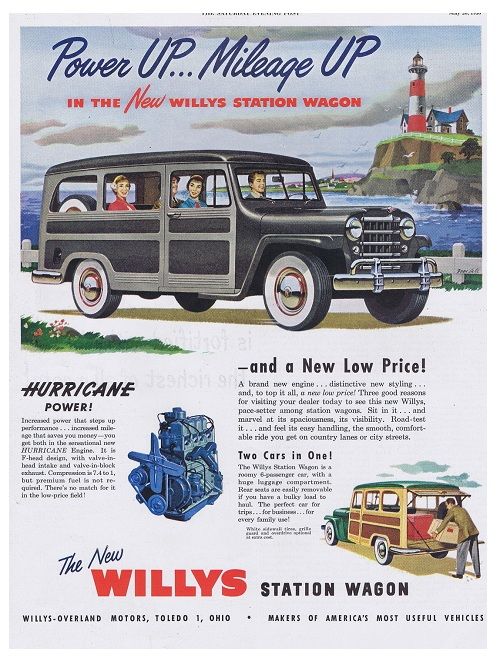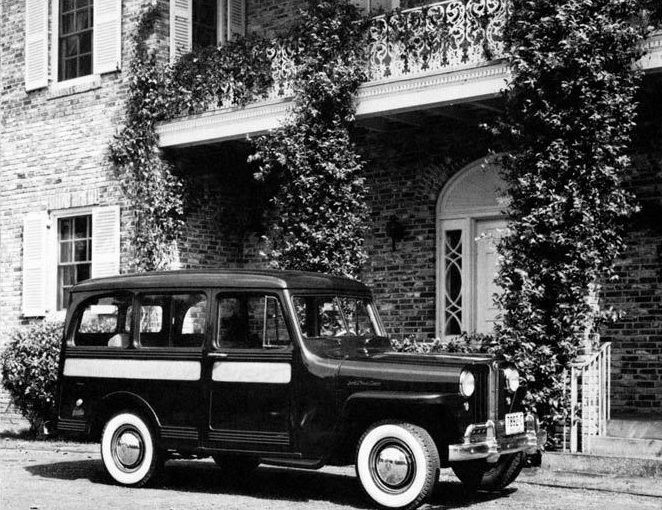Willys-Overland Motors, teamed with Ford, churned out over 600,00 Bantams and when the war was over many of the young men, having been accustomed ( and impressed ) with its heavy-duty performance purchased their own "jeeps" for work use back in the States.
It was in 1945 however that Willys-Overland hired Brooks Stevens, one of the most talented industrial designers of the 1940s, to design a station wagon that they could market to the mass....a vehicle for families that was both safe, sturdy, and reliable. A work-horse for the public.
In the summer of 1946, fresh from the factory rolled out the all-new Willys-Overland Jeep Station Wagon "463". It was built with an all-steel body ( some had wood side-panel fronts to give them more of a "rustic" appearance ), a small four-cylinder engine and a very eye-appealing design.
In 1948, the 663 model came out powered by a Lightning straight-six engine and the following year saw the first four-wheel drive model designed. The Willys-Overland was fast becoming one of the world's first popular sports utility vehicles.
In 1950, the 473 got a new engine, the F-134 Hurricane, and a delivery van was added to the collection. While the station wagon continued to made up until 1965, it was finally dropped due to the introduction of the superior Jeep Wagoneer.
One of the later year models had a starring role in Stanley Donen's 1963 comedy epic "It's a Mad, Mad, Mad, Mad World" where it was driven by 'Colonel Hawthorne' ( English comic Terry-Thomas ) en route to the Big W at Santa Rosita Park.
Steven's design was wonderful - not only did the station wagon look great on a farm, or a beach, or in the Claifornia desert..but even at the entrance to a stately manor it held its own and "belonged". Today it is relatively easy to come across a station wagon, but with its all-metal body, good luck finding one that isn't rusted through!

